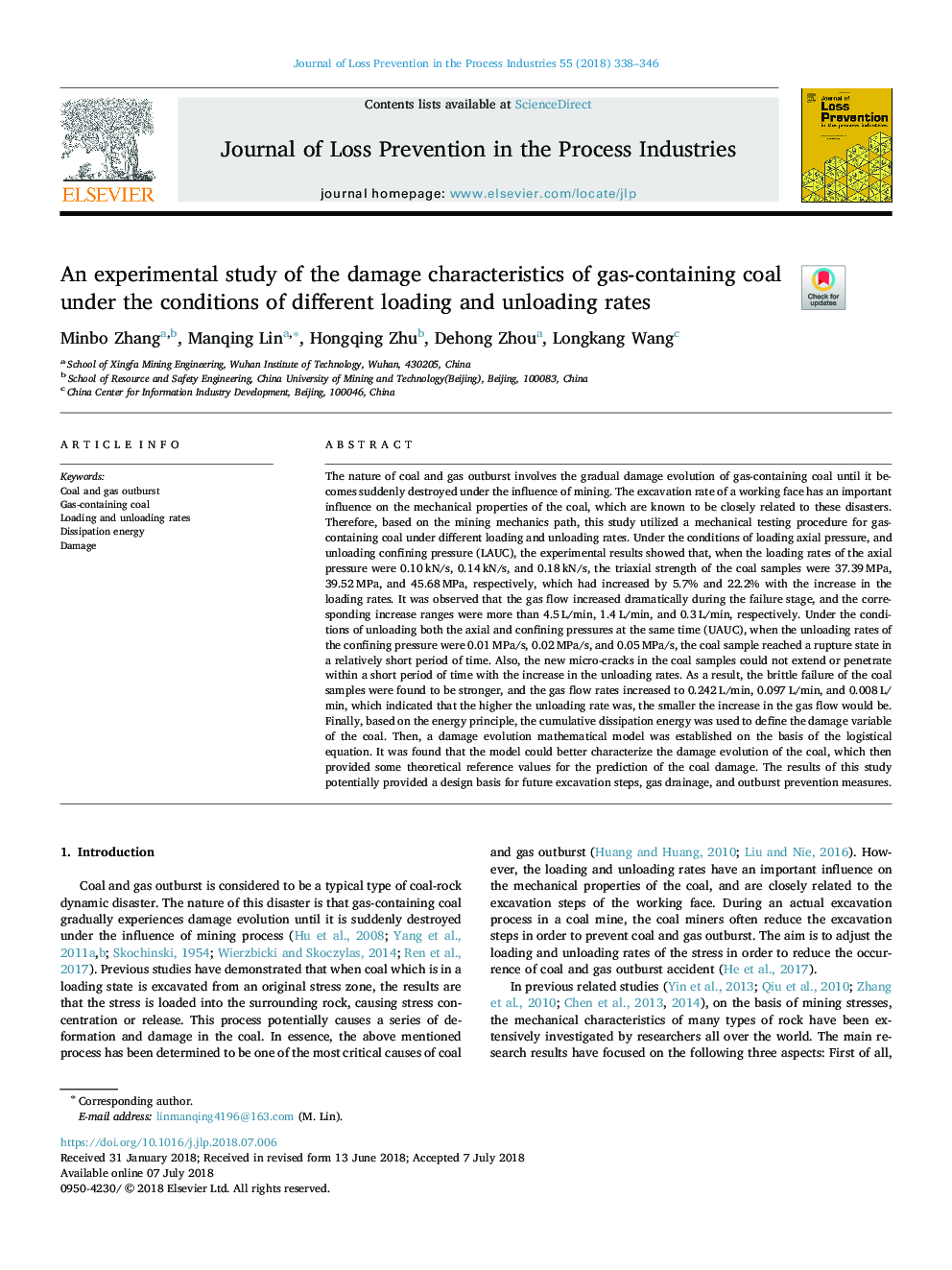| کد مقاله | کد نشریه | سال انتشار | مقاله انگلیسی | نسخه تمام متن |
|---|---|---|---|---|
| 6972810 | 1453253 | 2018 | 9 صفحه PDF | دانلود رایگان |
عنوان انگلیسی مقاله ISI
An experimental study of the damage characteristics of gas-containing coal under the conditions of different loading and unloading rates
ترجمه فارسی عنوان
یک مطالعه تجربی از ویژگی های آسیب زغال سنگ حاوی گاز در شرایط بارگیری و تخلیه مختلف
دانلود مقاله + سفارش ترجمه
دانلود مقاله ISI انگلیسی
رایگان برای ایرانیان
کلمات کلیدی
زغال سنگ و گاز خروجی، گاز حاوی ذغال سنگ، بارگیری و تخلیه، انرژی توزیع، خسارت،
موضوعات مرتبط
مهندسی و علوم پایه
مهندسی شیمی
بهداشت و امنیت شیمی
چکیده انگلیسی
The nature of coal and gas outburst involves the gradual damage evolution of gas-containing coal until it becomes suddenly destroyed under the influence of mining. The excavation rate of a working face has an important influence on the mechanical properties of the coal, which are known to be closely related to these disasters. Therefore, based on the mining mechanics path, this study utilized a mechanical testing procedure for gas-containing coal under different loading and unloading rates. Under the conditions of loading axial pressure, and unloading confining pressure (LAUC), the experimental results showed that, when the loading rates of the axial pressure were 0.10â¯kN/s, 0.14â¯kN/s, and 0.18â¯kN/s, the triaxial strength of the coal samples were 37.39â¯MPa, 39.52â¯MPa, and 45.68â¯MPa, respectively, which had increased by 5.7% and 22.2% with the increase in the loading rates. It was observed that the gas flow increased dramatically during the failure stage, and the corresponding increase ranges were more than 4.5â¯L/min, 1.4â¯L/min, and 0.3â¯L/min, respectively. Under the conditions of unloading both the axial and confining pressures at the same time (UAUC), when the unloading rates of the confining pressure were 0.01â¯MPa/s, 0.02â¯MPa/s, and 0.05â¯MPa/s, the coal sample reached a rupture state in a relatively short period of time. Also, the new micro-cracks in the coal samples could not extend or penetrate within a short period of time with the increase in the unloading rates. As a result, the brittle failure of the coal samples were found to be stronger, and the gas flow rates increased to 0.242â¯L/min, 0.097â¯L/min, and 0.008â¯L/min, which indicated that the higher the unloading rate was, the smaller the increase in the gas flow would be. Finally, based on the energy principle, the cumulative dissipation energy was used to define the damage variable of the coal. Then, a damage evolution mathematical model was established on the basis of the logistical equation. It was found that the model could better characterize the damage evolution of the coal, which then provided some theoretical reference values for the prediction of the coal damage. The results of this study potentially provided a design basis for future excavation steps, gas drainage, and outburst prevention measures.
ناشر
Database: Elsevier - ScienceDirect (ساینس دایرکت)
Journal: Journal of Loss Prevention in the Process Industries - Volume 55, September 2018, Pages 338-346
Journal: Journal of Loss Prevention in the Process Industries - Volume 55, September 2018, Pages 338-346
نویسندگان
Minbo Zhang, Manqing Lin, Hongqing Zhu, Dehong Zhou, Longkang Wang,
